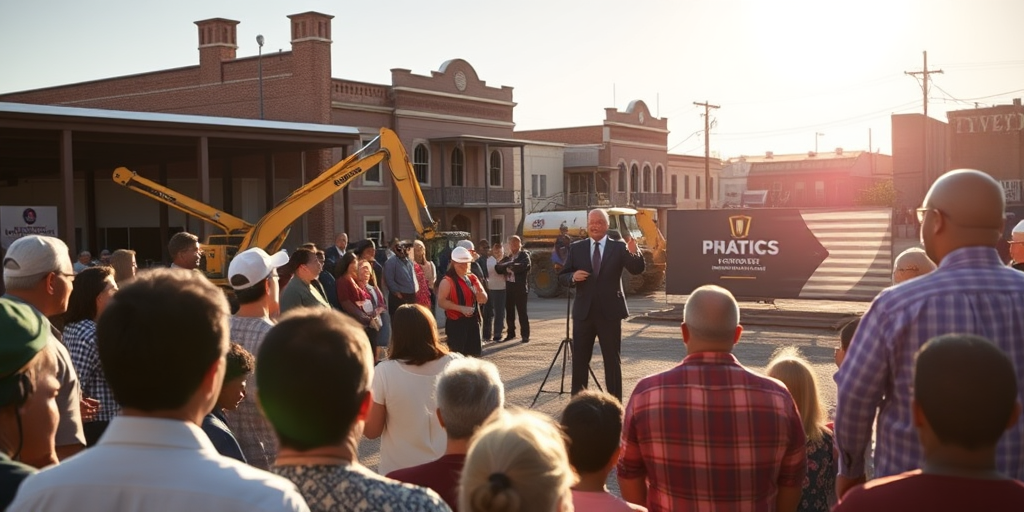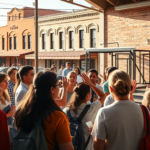# USDA to Invest $750 Million in New World Screwworm Protection Facility in Edinburg
The United States Department of Agriculture (USDA) has announced a monumental investment of $750 million to establish a new facility in Edinburg, Texas. This state-of-the-art facility is set to produce sterile New World screwworm flies, a critical component in combating the northward spread of screwworms—a significant threat to American livestock and agriculture.
## Securing the Future of American Agriculture
During a press conference, Texas Governor Greg Abbott and U.S. Secretary of Agriculture Brooke Rollins highlighted the initiative’s importance. The investment is a direct response to the growing threat posed by the New World screwworm to U.S. cattle production, stressing the urgent need to bolster domestic capabilities in producing sterile flies.
For a long time, the U.S. has been dependent on sterile screwworm flies imported from Panama. However, the new facility in Edinburg will dramatically increase production capacity. With the ability to produce 300 million sterile flies per week, this facility will triple the current production capabilities, significantly enhancing efforts to prevent screwworm outbreaks.
Governor Abbott emphasized the facility’s significance, stating, “Texas agricultural producers feed the world. Our state’s food and agriculture sector supports over 2 million jobs and creates over $867 billion in total economic impact. This initiative ensures we protect these resources and our nation’s food supply.”
## Local Impact: A Boost for the Rio Grande Valley
The announcement of this facility is particularly significant for the Rio Grande Valley (RGV), an area heavily reliant on agriculture. Local leaders, including Congressman Tony Gonzales and Texas Commissioner of Agriculture Sid Miller, have shown robust support for the initiative, emphasizing the unified effort to mitigate this agricultural threat.
Dr. Laura Martinez, a professor of Agriculture at the University of Texas Rio Grande Valley, remarked, “The establishment of this facility will not only generate employment opportunities in Edinburg but will also position the Valley as a critical player in national agricultural security.” With the facility’s operations, Valley residents can expect an influx of job opportunities and economic activity, potentially pioneering new agricultural research and innovations in the region.
## Context and Connections to Past Challenges
Historically, the RGV has faced numerous challenges related to agriculture and pest management. Governor Abbott had previously instructed the Texas Parks and Wildlife Department and the Texas Animal Health Commission to create a joint Texas New World Screwworm Response Team, signifying a proactive stance in tackling such threats.
This new project is also a testament to the broader efforts under President Trump’s administration to fortify domestic food security and protect agricultural infrastructure from foreign pests and diseases. Secretary Rollins reiterated, “This investment is pivotal in securing our borders from national security threats and ensuring our American agricultural industry remains safe, secure, and resilient.”
## Future Implications for South Texas
The long-term implications for South Texas are substantial. By greatly enhancing the capacity to produce sterile flies domestically, the U.S. not only strengthens its defensive measures against screwworm threats but also alleviates the dependence on international imports.
Ramon Valdez, a cattle rancher in Hidalgo County, voiced optimism about the project. “It’s reassuring to see investments being made right in our backyard. This facility will be a game-changer for us, ensuring our livestock remains protected from screwworm infestations,” he stated.
Furthermore, the facility’s presence in Edinburg may catalyze collaborative efforts between local educational institutions and agricultural bodies to foster innovation and research. As pest threats evolve with changing climates and ecosystems, having a local base of operations could support adaptive strategies and educational outreach for Valley residents and farmers.
## Engaging the Community
As this initiative progresses, community involvement will be crucial. Valley residents are encouraged to stay informed and participate in ongoing discussions surrounding the facility’s development and operations. Information sessions and public forums are anticipated as part of the continued engagement strategy.
For more information, residents can contact the USDA’s regional office or visit the Texas Department of Agriculture’s website. These resources provide further details on the project’s timeline and potential impacts on local agriculture.
In conclusion, the investment in the new world screwworm protection facility in Edinburg exemplifies a significant stride towards safeguarding the U.S. agricultural infrastructure. This venture not only addresses immediate agricultural threats but also heralds a new era of economic opportunity and resilience for the Rio Grande Valley and beyond.







